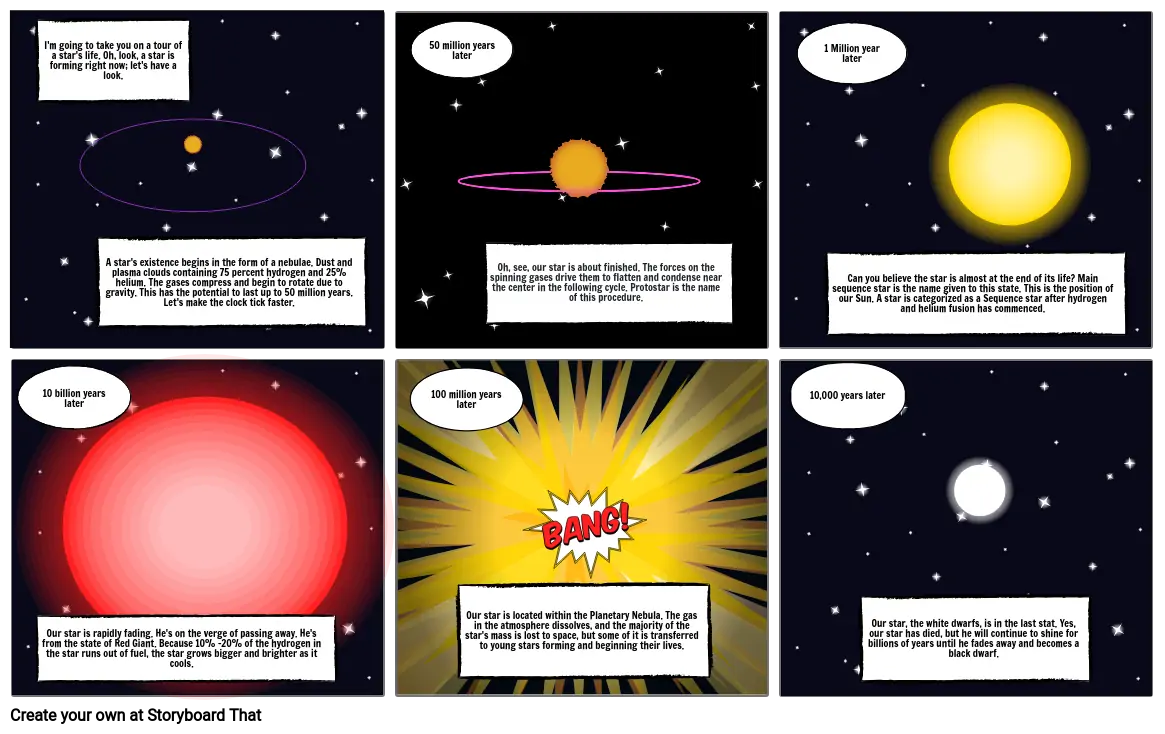star's life cycle

Storyboard Text
- I'm going to take you on a tour of a star's life. Oh, look, a star is forming right now; let's have a look.
- A star's existence begins in the form of a nebulae. Dust and plasma clouds containing 75 percent hydrogen and 25% helium. The gases compress and begin to rotate due to gravity. This has the potential to last up to 50 million years. Let's make the clock tick faster.
- 50 million years later
- Oh, see, our star is about finished. The forces on the spinning gases drive them to flatten and condense near the center in the following cycle. Protostar is the name of this procedure.
- 1 Million year later
- Can you believe the star is almost at the end of its life? Main sequence star is the name given to this state. This is the position of our Sun. A star is categorized as a Sequence star after hydrogen and helium fusion has commenced.
- 10 billion years later
- Our star is rapidly fading. He's on the verge of passing away. He's from the state of Red Giant. Because 10% -20% of the hydrogen in the star runs out of fuel, the star grows bigger and brighter as it cools.
- 100 million years later
- Our star is located within the Planetary Nebula. The gas in the atmosphere dissolves, and the majority of the star's mass is lost to space, but some of it is transferred to young stars forming and beginning their lives.
- 10,000 years later
- Our star, the white dwarfs, is in the last stat. Yes, our star has died, but he will continue to shine for billions of years until he fades away and becomes a black dwarf.
Over 30 Million Storyboards Created

